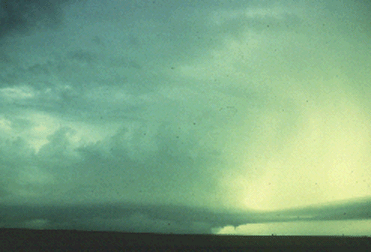Originally posted by Karen Rhoden+--><div class='quotetop'>QUOTE(Karen Rhoden)</div>
In the end - I'm not entirely sure I understood the question - wondering the same as what Aaron mentioned.
But I would add that inflow notches - by their very nature - do NOT contain precipitation. That's because they're inflow notches.
Perhaps I'm still not really understanding the question.
KR[/b]
<!--QuoteBegin-Aaron Kennedy
I've never heard it referred to as a \"forward-flank notch\" before... usually just as an inflow notch
If you're talking about the term "forward/front flank notch" and if you're thinking it's a my invention, guys, you're wrong :wink:
I'ver already read this term before some other times. This confirm what I'm saying.
Here the link complete:
http://www.crh.noaa.gov/lmk/soo/docu/supercell.htm
Taking apart this, as it seems to me that is a word pronuncation problematic, let's come back to our question.
Karen, you're saying that "inflow notches - by their very nature - do NOT contain precipitation. That's because they're inflow notches. "
In part I agree with you because, in the "classic" definition, the iflow notches don't contain precipitations; but are you sure that sometimes in HP supercells, things don't go in this way? I would be careful in asserting that HP inflow notches never contain precipitations...
I make you an exemple: Hallam supercell, posted by Gabe.
If the inflow notch is "a radar signature characterized by an indentation in the reflectivity pattern on the inflow side of the storm" as from definition, here there is not "precipitation free" indentation. Instead, if we see the radar image of the supercell posted by Scott Olson,May 5, 1995 Fort Worth HP SUPERCELL , I agree with you, Karen, the reflectivity of the inflow notch is pretty free from precipitations.
But in Hallam supercell, as you can see, the inflow notch isn't completely free from precipitations: I wanna say I see a low reflecttivity, that well represents the inflow, but I don't see the complete absence of rain.
Besides, the complete absence of rain is clearly evident in classic supercells inflow notch; I make you an example.
The inflow notch of this supercell has not reflectivity. You could go inside the notch but you would see only the mesocyclone structure and wall cloud at the base, without rain.
I hope to have written more clear than I did before.











